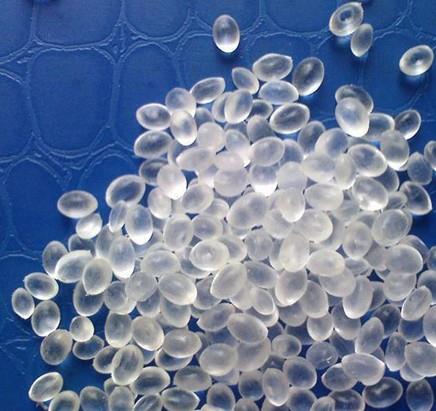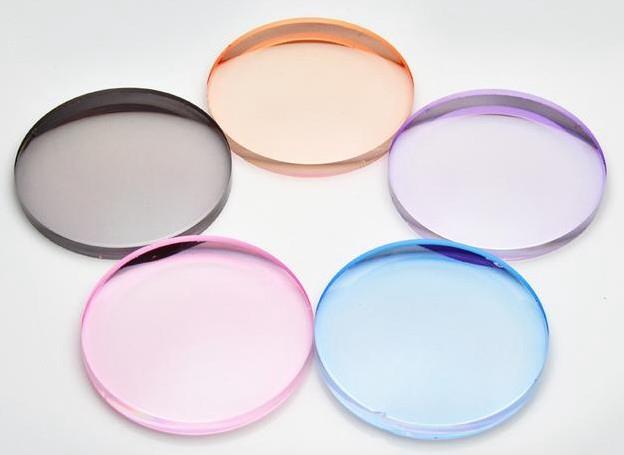
The resin is a hydrocarbon (hydrocarbon)-like secretion from a variety of plants, particularly conifers. It is valued for its special chemical structure and its use as a latex paint and glue. It is a mixture of various polymer compounds and therefore has different melting points.

The resin can be classified into two types: natural resin and synthetic resin. There are many kinds of resins, which are widely used in light industry and heavy industry. They are also often seen in daily life, such as plastics, resin glasses, paints, etc. Resin lenses are chemically processed and polished with resin as the raw material.
Characteristics
A. Low density: Due to the gap between the molecular chains, the number of molecules per unit volume is small, which determines the advantages of the resin lens: low specific gravity and light texture, which is 1/3-1/2 of the glass lens.
B. Moderate refractive index: ordinary CR-39 propylene diethylene glycol carbonate, refractive index is 1.497-1.504. Nikon Corporation of Japan has introduced a resin lens with a refractive index of 1.74.
C. The surface hardness is lower than that of glass, and it is easy to be scratched by hard objects. Therefore, it needs to be hardened. The hardened material is silica, but the hardness is not as good as the hardness of the glass. Therefore, the wearer should pay attention to the maintenance of the lens.
D. Good elasticity, due to the space between the molecular chains of organic matter, the relative intensity is 23-28 times that of the glass piece. Another major characteristic of the resin sheet is determined - good impact resistance. European, American, and Japanese countries prohibit children under the age of 16 from wearing glass lenses.
E. Auxiliary function: It can be added to obtain functions such as preventing harmful rays and discoloration.
F. Processability: Excellent, it can travel in full frame, half frame, frameless multi-type processing. It can also be permeable dyed to dye the lens into your favorite color.
G. Chemical: Since it is an organic compound, it is absolutely forbidden to wear it in an acid or alkaline environment.
H. Thermal performance: Do not use in environments above 60 degrees, otherwise the surface anti-reflection film will rupture and even cause the anti-reflection film to fall off.
I. Price: It is different with quality, function, brand and grade.
J. Lens size design: The US Food and Drug Administration's "FDA" standard stipulates that the center thickness can be designed to a minimum of 0.6 mm, but the strength requirements are correspondingly reduced. For this reason, manufacturers in Europe, the United States, Japan and other countries generally put nearsightedness. The central thickness of the lens with a distance of 100 degrees or more is designed to be more than 1.0 mm to ensure the overall strength of the lens.

Advantages and disadvantages
Advantages
A resin lens is an optical lens made of a resin. There are many different materials, which have their unique advantages compared to glass lenses:
1. Lightweight. The general resin lens is 0.83-1.5, and the optical glass is 2.27~5.95.
2. Strong impact resistance. The impact resistance of the resin lens is generally 8 to 10 kg/cm2, which is several times that of the glass, so it is not easily broken, safe and durable.
3. Good light transmission. In the visible light region, the transmittance of the resin lens is similar to that of the glass; the infrared light region is slightly higher than the glass; the ultraviolet region starts with 0.4 um, and the light transmittance decreases with the decrease of the wavelength, and the light with a wavelength of less than 0.3 um is almost all be absorbed.
4. Low cost. Injection molded lenses can be mass-produced by manufacturing a precision mold, saving processing costs and time.
5. Can meet special needs. For example, the production of aspherical lenses is not difficult, and glass lenses are difficult to handle.
Disadvantage
Surface wear resistance, chemical resistance is worse than glass, surface is easy to scratch, water absorption is larger than glass, and these shortcomings can be improved by coating method. The fatal disadvantage is high thermal expansion coefficient, poor thermal conductivity, low softening temperature, and easy deformation to affect optical performance.